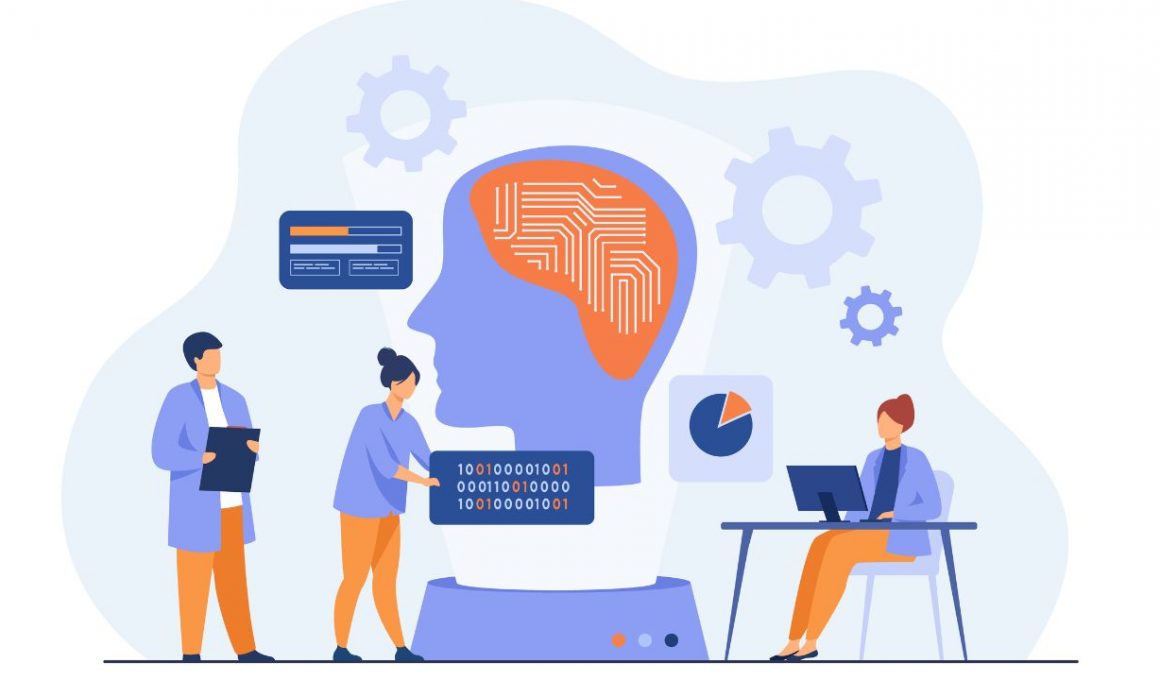Machine learning: where algorithms meet data to unlock the secrets of the digital universe.
This rich historical field traces back several decades, with pioneers like Alan Turing and Claude Shannon laying the foundation for artificial intelligence (AI) through neural networks and learning machines. The field experienced its first wave in the 1950s when researchers began exploring the concept of creating machines capable of learning and mimicking human intelligence.
But it wasn’t until the 1980s that the second wave of machine learning emerged, driven by breakthroughs in algorithms and computational power. Innovations like support vector machines, decision trees, and Bayesian networks revolutionized the field. However, despite these advancements, the practical application of machine learning faced limitations due to factors like data availability and computational constraints.
Now, we find ourselves riding the crest of the current third wave of machine learning, characterized by remarkable progress in:
- Deep learning,
- Natural language processing, and
- Reinforcement learning.
This wave propels us into a new era of possibilities, where machines can learn from vast amounts of data, comprehend human language, and make optimal decisions through trial and error.
So, let’s delve into the realm of machine learning, and find out how Moolya’s weekly Tech-Tuesday sessions, an initiative by the L&D team, delivered by Dhanasekar Subramaniam, VP of Testing and Automation Delivery, and Balasubramanian Kanthasamy – Senior SDET, ensured everyone is on board with how machine learning revolutionizes our understanding of patterns and predictions, unlocking the secrets of the digital universe.
Data and Decision: Machine Learning for Informed Choices
Unleashing the Power of Data Through Machine Learning
In today’s data-driven world, extracting meaningful insights and making informed choices is paramount. By harnessing the potential of algorithms and statistical techniques, machine learning empowers us:
- to make accurate predictions,
- classifications, and
- informed decisions.
The Two Pillars: Supervised and Unsupervised Learning
At the heart of machine learning lie two fundamental approaches: supervised and unsupervised learning.
- Supervised learning: It comes into play when the goal is to make predictions or classifications based on historical data that contains labeled examples. In this scenario, models are trained to recognize patterns and relationships between input variables and corresponding output labels. Through iterative training and optimization, these models become adept at predicting outcomes for unseen data, enabling us to make informed choices based on past experiences.
- Unsupervised learning: It proves valuable where the data lacks predefined labels or annotations. It allows us to explore and uncover hidden patterns, structures, and relationships within the data itself. Unsupervised learning techniques, such as clustering and dimensionality reduction, enable us to group similar data points, extract meaningful representations, and gain deeper insights into complex datasets. This unsupervised exploration empowers decision-makers to discover new perspectives and make data-driven choices without relying on predefined labels.
Recommendation Engines: Personalization at its Finest
One striking application of machine learning is in recommendation engines. These engines employ sophisticated algorithms to:
- Analyze user behavior,
- preferences, and
- historical data
to provide personalized suggestions. By leveraging the power of machine learning, recommendation engines can understand individual preferences, predict user preferences for new items, and offer tailored recommendations that enhance user experiences.
Whether it’s a streaming platform suggesting movies based on viewing history, an e-commerce site recommending products based on previous purchases, or a music streaming service curating playlists based on user preferences, recommendation engines leverage the vast amount of available data to provide personalized and engaging experiences.
Machine Learning and Maths: The Synergy of Data and Performance
The Power of Data: Learning from Patterns
Machine learning systems differentiate themselves from traditional software development approaches by learning from data and continuously improving their performance over time. Instead of relying on explicit programming, these systems identify patterns and make predictions based on the data they receive. This data-centric approach allows them to adapt to new information, refine their models, and enhance their capabilities.
The Role of Mathematics and Statistics
Mathematics and statistics form the backbone of machine learning. Concepts like linear algebra, calculus, and probability provide the necessary tools to develop and optimize machine learning models effectively. Understanding these mathematical principles enables practitioners to make informed decisions, handle large-scale data, and unlock the full potential of machine learning in various domains.
The impact is already evident in the real world.
From Search Ranking to Image Recognition
The impact of machine learning is already evident in companies like Google, where it is utilized in diverse applications. From search ranking algorithms that prioritize relevant results to recommendation systems that personalize user experiences, machine learning enhances the efficiency and effectiveness of these processes. Image recognition technologies, powered by machine learning, enable the automatic identification and categorization of visual content, revolutionizing industries like healthcare, security, and automation.
Developing computational thinking skills is crucial in the age of machine learning. This involves approaching problems from a data-centric perspective, breaking them into solvable components, and leveraging algorithms and models to arrive at solutions.
Data Revolution: Automating Web Interactions and Extracting Insights
Another aspect that contributes to the evolution of technology is web automation and scraping.
These are powerful techniques for streamlining web interactions and extracting data. Here are some key tools used in these processes:
- Selenium: A popular tool for web automation, allowing for programmatically interacting with websites, and automating tasks like form submission and data extraction.
- Beautiful Soup: A widely used Python library for web scraping, enabling the parsing of HTML and XML documents and extracting the desired information.
The next important aspect is data analysis. In this realm, data manipulation assumes a vital role. This encompasses various tasks, including the download, conversion, and preparation of data for further analysis. Here are some essential tools for data manipulation:
- Pandas: A powerful Python library for data manipulation and analysis, providing data structures like data frames that facilitate easy exploration and manipulation of data.
- Jupyter: An interactive environment that enhances data analysis by allowing code execution, data visualization, and collaborative documentation in a notebook format.
By leveraging these tools, analysts and researchers can streamline web interactions, extract relevant data, and manipulate it effectively for insightful analysis. Integrating web automation, scraping, and data manipulation tools facilitates informed decision-making and empowers data-driven solutions.
Finding the Right Business Problem for Data-Driven Solutions
When venturing into machine learning, it is crucial to start with the right business problem. Not all issues are suitable for machine learning solutions, so careful consideration is required. Identifying a problem that can benefit from predictive or analytical capabilities is vital. This involves understanding the problem domain, the availability of relevant data, and the potential impact on business outcomes.
Example:
- Problem: Predict customer churn in a subscription-based service.
- Data: Historical customer data, subscription details, and engagement metrics.
- Impact: Reduce customer attrition and increase retention rates.
The quality and relevance of the data used in machine learning models are equally important. High-quality data ensures that the models are accurate and reliable in their predictions. Data selection involves considering factors such as data completeness, data quality, and data representativeness. By using the right data, machine learning models can uncover meaningful patterns and insights, leading to more effective decision-making.
Training, Prediction, and Evaluation Phases in Machine Learning
Machine learning involves a cyclical process that consists of three main phases: Training, Prediction, and Evaluation.
- Training:
The training phase enables models to learn from historical data, optimizing their parameters and achieving optimal performance. It involves several essential steps to ensure the model’s effectiveness and accuracy.
- Algorithm selection: Choose the most suitable algorithm for the problem.
- Data preparation: Prepare the data by cleaning, preprocessing, and transforming it.
- Model training: Train the model using the prepared data.
- Parameter optimization: Fine-tune the model parameters for optimal performance.
Once the model is trained, it enters the prediction phase.
- Prediction:
Here, it applies the learned patterns to new, unseen data to make predictions or classifications. This phase is where the model generates actionable insights and provides value to the business. Predictions can be in the form of numerical values or categorical labels, depending on the nature of the problem.
Regression and Mean Average Error in Prediction
Regression analysis is a fundamental concept in machine learning used for predicting continuous numerical values. It aims to establish a relationship between input variables and the target variable, enabling predictions for new instances. Techniques such as linear regression, random forest regression, or XG Boost regression are commonly used in regression tasks.
- Evaluation:
The evaluation phase assesses the performance of the machine learning model. It involves comparing the model’s predictions to known outcomes or labels. This evaluation helps determine the accuracy, precision, recall, or other performance metrics of the model. Through iterative evaluation, models can be refined, and their performance can be improved over time.
Traditional Programming vs. Machine Learning

Traditional programming has long been the dominant approach to developing software systems. It involves explicitly instructing computers on how to perform specific tasks using logical and mathematical rules. However, machine learning has emerged as a powerful alternative that focuses on learning from data and making predictions based on probabilities.
In traditional programming, developers meticulously design algorithms and rules to address different scenarios. For example, if we want a robot to cross a road, we would define specific conditions based on the objects detected, traffic signals, and other factors. This approach requires human intuition and explicit programming for each possible situation.
On the other hand, machine learning takes a different approach. Instead of explicitly programming rules, machine learning algorithms learn from vast amounts of data to identify patterns and make predictions. For instance, a machine learning model can be trained to classify images as cats or dogs by analyzing numerous examples of labeled images.
Machine learning offers a paradigm shift, enabling systems to learn from data and make probabilistic predictions. Understanding the nuances and potential of machine learning opens up exciting avenues for innovation and problem-solving.
Deep learning: Transforming Machine Learning for Enhanced Performance
Understanding the Fundamental Difference
Let’s start by understanding the fundamental difference between the two. Machine learning refers to a process where a single model learns from data to make predictions or decisions. On the other hand, deep learning involves breaking down the learning process into multiple models, each responsible for learning a specific aspect of the data to achieve more complex solutions.
The Role of Neural Networks
Neural networks play a vital role in deep learning. They are computational models inspired by the structure and function of the human brain. Just like the neurons in our brain, neural networks consist of interconnected nodes called artificial neurons or perceptrons. These perceptions are organized into layers, with each layer contributing to the overall learning process. Information flows through these layers, allowing the network to learn from the data and make predictions.
Efficient Training and Data Requirements
While deep learning models require a training phase like machine learning, they offer the advantage of potentially requiring fewer data. In machine learning, large amounts of labeled data are necessary to train accurate models. However, deep learning can effectively learn from smaller datasets. This is because the distributed nature of deep learning allows each model to focus on different aspects of the data, enabling them to extract valuable information even from limited samples.
Expanding Possibilities: Applications and Benefits
Now, let’s explore some of the applications and benefits of deep learning:
- Natural Language Processing (NLP): Deep learning models excel in understanding and generating human language, enabling advancements in chatbots, language translation, sentiment analysis, and more.
- Computer Vision: Deep learning plays a crucial role in computer vision tasks, allowing machines to accurately interpret and analyze visual data, leading to applications like object detection, image classification, and image generation.
- Speech Recognition: Deep learning models have revolutionized speech recognition technology, enabling accurate transcription and voice-controlled systems.
- Autonomous Vehicles: Deep learning is a key component in developing self-driving cars, as it enables them to analyze and interpret complex sensory data to make real-time decisions.
- Medical Diagnosis: Deep learning has shown promising results in medical imaging analysis, aiding in the diagnosis of diseases like cancer and assisting in the detection of abnormalities.
- Recommendation Systems: Deep learning algorithms power recommendation systems that suggest personalized content, products, or services based on user preferences and behavior.
The ability of deep learning models to learn complex patterns and make accurate predictions has opened up new avenues for innovation and problem-solving.
Artificial Intelligence (AI): Empowering Intelligent Systems

Artificial Intelligence (AI) is a dynamic field of computer science focused on developing intelligent machines capable of performing tasks that typically require human intelligence. AI encompasses various subfields, including machine learning and deep learning, which play integral roles in advancing AI capabilities. Artificial Intelligence (AI) encompasses various subfields, including machine learning and deep learning, which are closely connected in their application and methodology.
Machine learning develops algorithms and models that enable computers to learn from data and make predictions or decisions without explicit programming. Deep learning, on the other hand, is a subset of machine learning that leverages neural networks with multiple layers to learn and extract complex patterns and representations from data.
The connection between machine learning and deep learning lies in the fact that deep learning is a more sophisticated and powerful extension of machine learning. Deep learning algorithms build upon the principles of machine learning but with the added advantage of employing multiple layers of interconnected nodes (neurons) to learn increasingly abstract representations of the input data.
This hierarchical learning allows deep learning models to automatically extract and learn complex features, making them particularly effective in tasks such as computer vision, natural language processing, and speech recognition.
Image data processing: Extracting meaningful insights
Image data processing is a fundamental aspect of AI, particularly in computer vision tasks. Images are represented as matrices of pixel values, and extracting meaningful features and positions from these pixels is crucial for practical analysis. Techniques like edge detection, shape recognition, and texture analysis aid in capturing relevant information for further analysis and prediction.
Pre-Trained Models: Leveraging Knowledge Transfer
Pre-trained models have gained popularity in the AI community due to their effectiveness and efficiency. These models are trained on large-scale datasets by experts and made available for use by others. By leveraging the knowledge learned from extensive data, pre-trained models, such as ResNet, VGG, and MobileNet, achieve state-of-the-art performance in tasks like image recognition. They can be fine-tuned on specific datasets to adapt them to new domains, reducing training time and data requirements.
Chat-based Models: Advancing Conversational AI
Chat-based models, such as GPT-3 and GPT-4, have attracted significant attention in recent years. These models utilize deep learning techniques, specifically transformer architectures, to generate human-like text responses given prompts. Training these models involves exposure to vast amounts of textual data, enabling them to generate contextually appropriate and coherent responses by capturing patterns and relationships in the training data.
Machine learning is an incredible tool that holds the potential to revolutionize various aspects of our lives. It can provide accurate predictions, uncover hidden patterns, and automate complex tasks.
Machine learning is like a box of chocolates—sometimes it predicts your cravings perfectly, and sometimes, it surprises you with a flavor combination you never knew you needed!
3
